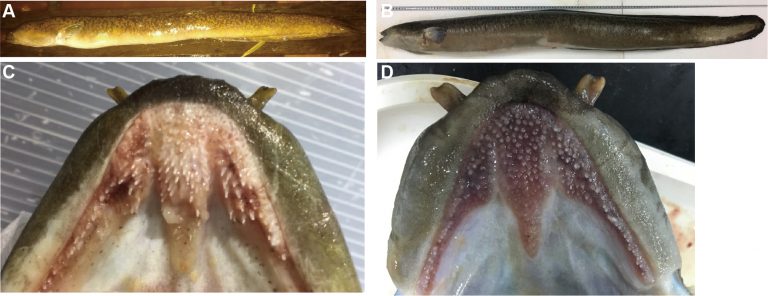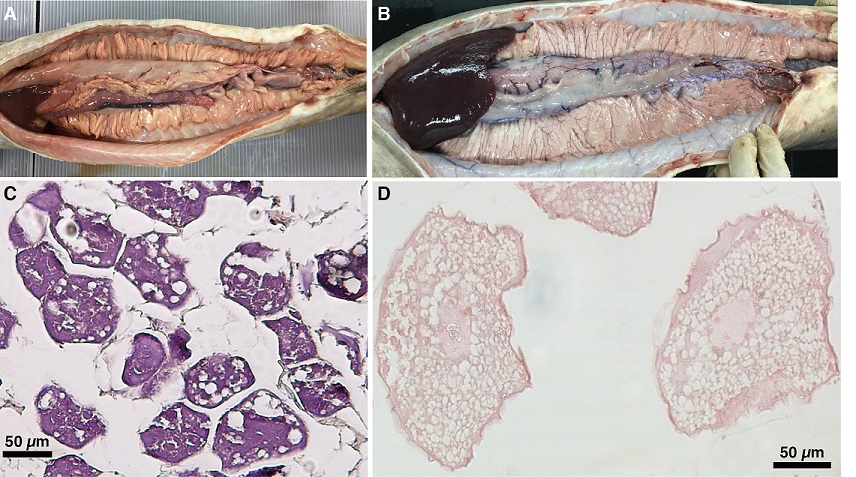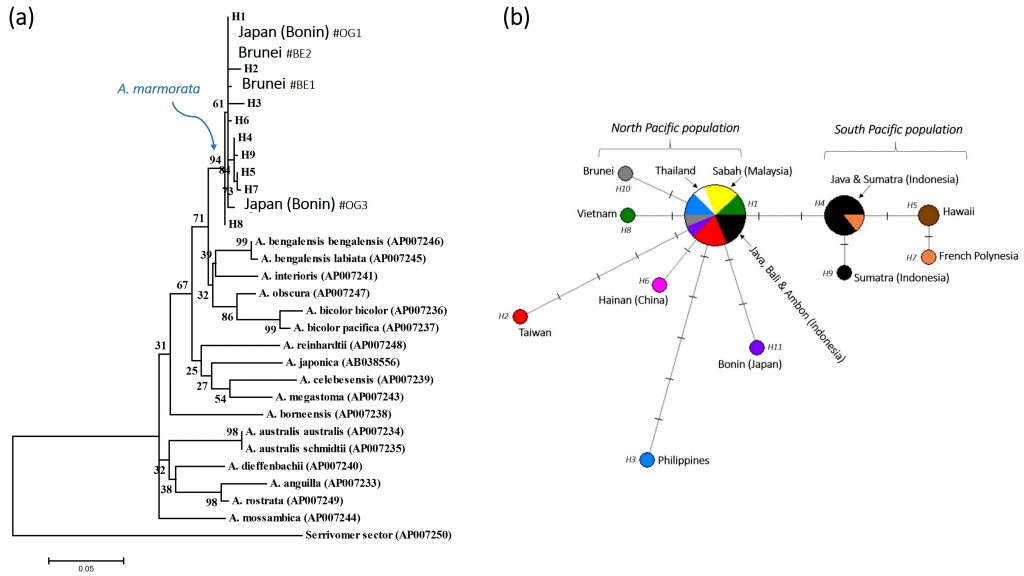
Tropical anguillid eels account for two-thirds of the 19 species in genus Anguilla. However, information on the species diversity, geographical distribution, and life histories of the tropical eels is very limited. Recent studies suggested that morphological species identification of the tropical anguillid eels should be validated by molecular analysis for accurate identification. A few reports have described the presence of anguillid eels in Brunei Darussalam, however these publications did not show the specific species identification. After surveying for three years, two anguillid eels were found in Brunei Darussalam, Borneo Island. They were firstly identified as Anguilla marmorata Quoy & Gaimard 1824 using morphological analysis and further gene analysis of cytochrome c oxidase subunit I (COI) confirmed the species identification. This study is the first comprehensive description of A. marmorata in Brunei Darussalam, Borneo Island. The molecular phylogenetic tree and haplotype network analyses suggest that A. marmorata found in Brunei Darussalam would belong to the North Pacific population of the westernmost distribution. Previous study on the population structure of the giant mottled eel, A. marmorata, suggested that this species has a multiple population structure as follows: (i) the North Pacific (from Japan to Sulawesi), (ii) the South Pacific (from Papua New Guinea to Tahiti), (iii) the Indian Ocean (from Sumatra to Madagascar), and (iv) Guam (including Micronesia) populations.

In the present study, based on the molecular phylogenetic tree and the haplotype network analyses suggest that A. marmorata from Brunei Darussalam belongs to the North Pacific population. A. marmorata in Brunei Darussalam might originate from the spawning areas in the western North Pacific. However, the distance from the spawning area to the recruitment area in Brunei Darussalam is considerably longer compared to the other distribution areas, therefore the abundance of specimens that reach Brunei Darussalam might be quite low, making A. marmorata difficult to be discovered in the area.
One specimen of A. marmorata showed the final stage of maturation and it might be about to start or had just started its downstream migration to the western North Pacific for spawning. The finding suggests that the eels from the westernmost distribution of the North Pacific population might be able to contribute to the reproduction. Further continuous field sampling and analysis of more DNA markers should be undertaken to better understand the details of migration, distribution and life history of the tropical anguillid eels.

Article by: Prof. Dr. Takaomi Arai (https://expert.ubd.edu.bn/takaomi.arai)

